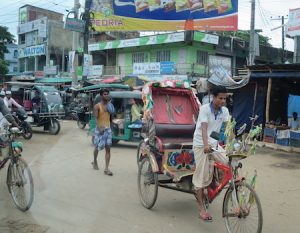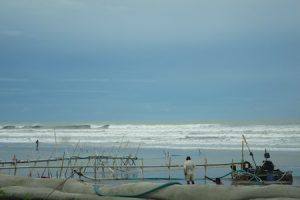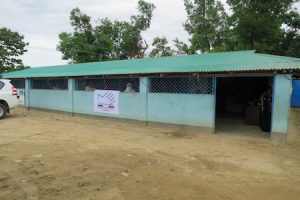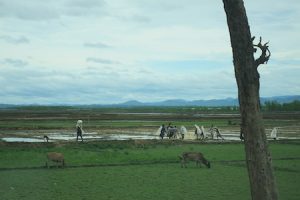The People's Republic of Bangladesh came into existence only in 1971 after the “war of liberation” from Pakistan. The partition of the British empire in 1947 resulted in the split of Bengal into two regions divided by a border, that was physical, political and religious all at once. West Bengal, mostly Hindu, was kept under the dominion of the Indian Government, while East Bengal (renamed East Pakistan) had a Muslim majority and was annexed to the newly formed Pakistan. Separated by approximately 1700 kilometers, the political union between Pakistan and East Pakistan was not easy.
Through the years, ethnic and linguistic discrimination became progressively widespread in the Pakistani civil and military services, in which Bengalis were under-represented. The situation exploded after the general elections of 1970 when the pro-Bengal party Awami League won the majority of seats at the General Assembly. Subsequently, the Pakistani Government annulled the electoral result, which brought East Pakistan, backed by India, to declare independence on the 26th of March 1971. This led to a conflict between Islamabad and Dhaka that ended with the quick surrender of Pakistan. The “Bangladesh Liberation War” started and ended in roughly 9 months.
The new country, which took the name of Bangladesh, adopted its constitution on November 4 1972, establishing a secular and multiparty parliamentary democracy. Soon after its creation, Bangladesh faced political instability and great socioeconomic challenges. Weakened by endemic poverty and recurrent famine, the country was run by military juntas for 15 consecutive years starting from the first coup d’état in 1975.
In addition, Bangladesh is severely affected by natural disasters. Positioned in the confluence of two large rivers, the Ganges and the Brahmaputra, much of the country is prone to seasonal flooding, landslides and cyclones making it extremely vulnerable to the effects of climate change, exacerbated by a very high population density. The People's Republic of Bangladesh covers an area of 147,000 square kilometers and has a population of over 160 million, making it one of the world's most densely populated countries.
In the last two decades, Bangladesh has benefitted from improved political stability, steady economic growth and enhanced foreign relations, particularly with neighboring India. During the same timeframe, life expectancy, literacy rates, per capita food production, infrastructures have increased significantly.
However, when the last Rohingya crisis erupted in Myanmar’s Rakhine State, in August 2017, hundreds of thousands of civilians were forced to flee their homes and cross the border into Bangladesh. Since then, the humanitarian situation in the country has intensified, especially in the area of Cox’s Bazar, currently the world’s largest refugee settlement.
The scale of the population influx has put tremendous strain on existing humanitarian services in the district of Cox’s Bazar, making a planned and harmonized intervention from the international community an urgent priority in order to contain the humanitarian crisis. According to UNCHR, as of early 2020, 859,808 Rohingya people have been registered in 187,844 households. Of these, 51% are children.
With resolution n. 50 of February 5, 2018, the Joint Committee of the Italian Ministry of Foreign Affairs and Cooperation extended the mandate of AICS Yangon to cover cooperation activities carried out in Bangladesh. Today, operations in Bangladesh are implemented under “non ordinary” planning, which means that AICS Yangon is entitled to carry out only emergency interventions.
Currently, AICS activities are concentrated in the area of Cox's Bazar and are aligned to emergency programs implemented by UN agencies and international NGOs. AICS projects are focused on humanitarian aid for the vulnerable groups living in the refugee camps in Cox's Bazar district, across the border from Myanmar.
Per ulteriori informazioni consulta:
https://www.worldbank.org/en/country/bangladesh/overview
https://data2.unhcr.org/en/situations/myanmar_refugees
http://data.un.org/CountryProfile.aspx/_Images/CountryProfile.aspx?crName=Bangladesh
https://www.unhcr.org/rohingya-emergency.html




